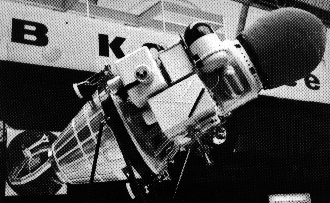Luna 10 & Luna 12
Luna 10 was launched on 31 March 1966 and Luna 12 on 22 October 1966. They
were the first Luna spacecraft intended to go into orbit around the moon,
rather than soft or hard landing there. On 3 April 1966, Luna 10 was put into
a selenocentric orbit -- becoming the moon's first man-made satellite. It had
an apogee of 1015 km, a perigee of 350 km, an inclination to the equatorial
plane of 72 degrees. The orbital time was 2 hours 58 minutes. The Luna 12
orbit was: apogee 1740 km, perigee 100 km, inclination 20 degrees, orbital
time 3 hours 25 minutes. Both missions carried instrumentation to study the
Moon and cislunar space. The instruments comprised a multichannel
scintillation gamma-ray spectrometer intended to measure the moon's gamma-
radiation. However, the Luna 10 and 12 spacecraft both measured the cosmic
gamma-ray background during their flight to the moon. |


